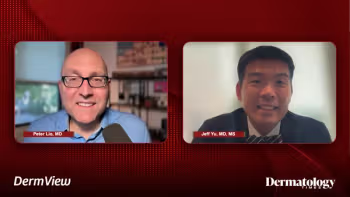
Combinations emerge as trend in non-invasive procedures
Singapore - Non-invasive ways to renew aging faces are growing and changing. There are new devices, new twists on old techniques - and even changes in potential patients' wants and needs. But according to Robert Weiss, M.D., one aspect of this cosmetic dermatology niche is not likely to change.
"I think what we're seeing is a trend toward combinations of devices and procedures being used more commonly - and, tests show, with better results," says Dr. Weiss, a partner in Dermatology Associates, Maryland Laser, Skin, and Vein Institute, Hunt Valley, Md.
"We're also seeing the emergence of Botox and fillers as both primary and adjunctive for site-specific applications," he said in his seminar on "Non-invasive Facial Rejuvenation - State of the Art," which he presented at the 16th Regional Asian-Australian Conference on Dermatology, held here.
Dr. Weiss began by pointing out some of the more notable advances in non-invasive facial-rejuvenation procedures, such as:
"More cosmetic dermatologists are using Botox and fillers like hyaluronic acid gel in combination with laser treatments to enhance those treatments," he says. "For example, it's been found that Botox alone for lateral crow's feet leaves lentigenes and telangiectasias. Similarly, the use of IPLs alone for lentigenes leaves resting and dynamic rhytides, or wrinkling problems. We now know that combining IPL treatment with Botox and hyaluronic fillers help alleviate those effects."
Dr. Weiss notes two products in this area that are gaining recognition for their effectiveness. One is GentleWaves LED Photomodulation (Light BioScience), an LED treatment that involves the interaction of light with skin cells. The treatment activates new collagen formation or lessens the breakdown of skin containing collagen.
He adds that hyaluronic acid-based products, particularly Restylane (Q-Med), increasingly are being used after non-ablative laser-based treatments and other light source-based treatments.
"This product has been found to be very effective in counteracting volume loss that devices can't repair," he says. "It's effective in eliminating shadow areas and filling in scars that may remain after non-ablative treatments."
In keeping with his suggestion that light-device treatment be combined with post-procedure Botox and/or filler treatment, Dr. Weiss says the GentleWaves and Restylane combination produces excellent results.
Dr. Weiss also discussed the way the new KTP green-light laser device generates a much larger spot size (10 mm), which, in turn, results in faster, more effective treatment of pigmentation conditions with minimal recovery time. He says this device is almost revolutionary in terms of its potential impact on the way non-invasive rejuvenation procedures are performed.
In addition, Dr. Weiss says, the newer IPL devices feature quicker light pulse, more controlled delivery and more effective skin cooling. Yet another advance is fractional resurfacing, involving treatment of the skin fractionally with patterns of microscopic laser hits. The result is quicker treatment, minimal patient recovery time and excellent results, Dr. Weiss says.
Newsletter
Like what you’re reading? Subscribe to Dermatology Times for weekly updates on therapies, innovations, and real-world practice tips.


















